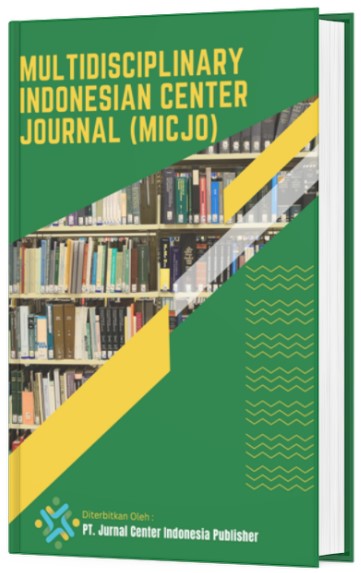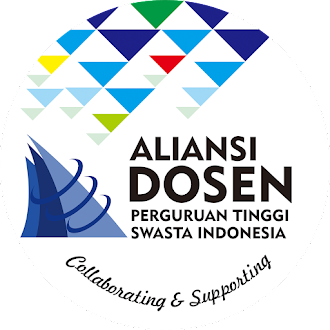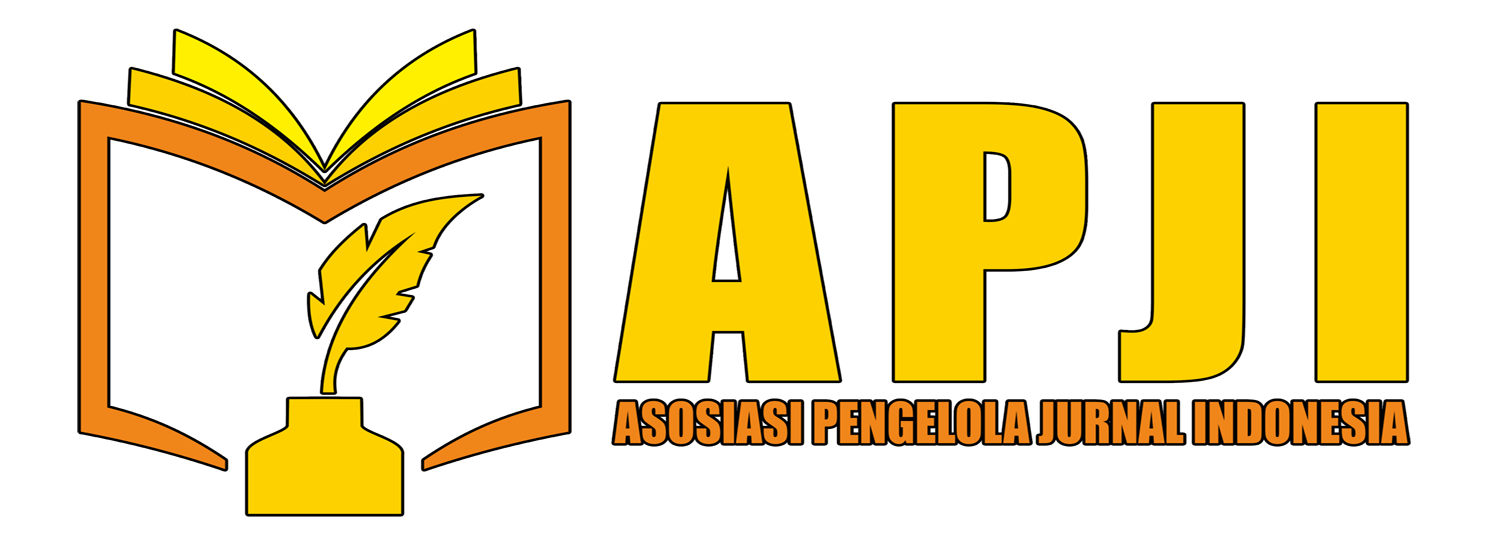MITIGATING EMERGENCY RISKS IN SUNNAH CUPPING THROUGH MEDICAL AND SHARIA INTEGRATION
DOI:
https://doi.org/10.62567/micjo.v2i3.782Keywords:
certification standards for hijama practitioners, comorbidities in complementary medical procedures, emergency preparedness in sunnah cupping, regulation of faith-based health practices, sunnah cupping safety protocolsAbstract
Sunnah cupping therapy is a traditional Islamic health practice increasingly embraced for its spiritual and therapeutic benefits. However, its widespread use, especially by uncertified practitioners, raises serious concerns about patient safety and emergency risks. This study aims to identify key systemic risk factors of medical emergencies related to sunnah cupping and propose an integrative framework combining Islamic jurisprudence (fiqh) with modern clinical standards. A qualitative descriptive approach was employed using a systematic literature review of peer-reviewed journals, clinical reports, Islamic texts, and contemporary fatwas. Thematic analysis revealed five major risk categories: lack of medical screening, unlicensed practitioners, hidden comorbidities, absence of emergency protocols, and poor understanding of medical safety. Reported complications included hypovolemic shock, infections, and prolonged wound healing—especially in patients with undiagnosed diabetes or coagulation disorders. The study also found that public misconceptions equating religious merit with clinical safety further worsen these risks. The research highlights the urgent need for standardized medical and sharia-based training, certification systems, and public education. Collaboration among healthcare professionals, Islamic scholars, and educational institutions is essential to establish a safe, accountable, and spiritually valid model of sunnah cupping. Integrating medical protocols with fiqh compliance can significantly reduce emergency incidents, enhance practitioner competency, and preserve the prophetic nature of the practice within a modern health framework. These findings offer a strategic path for safer implementation of prophetic medicine across Muslim communities.
Downloads
References
Alam, M. (2021). The role of cupping therapy (CT) in pain tackling, an insight into mechanism therapeutic effects and its relevance in current medical scenario. International Journal of Current Science Research and Review, 4(7). https://doi.org/10.47191/ijcsrr/v4-i7-16
AlBedah, A., Elsubai, I., Qureshi, N., Aboushanab, T., Ali, G., El-Olemy, A., … & Alqaed, M. (2019). The medical perspective of cupping therapy: effects and mechanisms of action. Journal of Traditional and Complementary Medicine, 9(2), 90–97. https://doi.org/10.1016/j.jtcme.2018.03.003
Alhamaid, Y., Aljawi, H., Alsughayyir, G., Alshammari, M., Albatshan, R., Alabbad, F., … & Almulhim, N. (2024). The knowledge, attitudes, and practices of emergency department staff to preparedness of disaster and emergency in Saudi Arabia: multicenter cross-sectional study. Indian Journal of Critical Care Medicine, 28(11), 1023–1027. https://doi.org/10.5005/jp-journals-10071-24823
Ali, M., Ragheb, M., & Ibrahim, R. (2023). Nurses’ performance regarding care of patients with posttraumatic hypovolemic shock. Journal of Nursing Science Benha University, 4(2), 319–330. https://doi.org/10.21608/jnsbu.2023.307343
Alrawi, S., Khidir, A., Elnashar, M., Abdelrahim, H., Killawi, A., Hammoud, M., … & Fetters, M. (2017). Traditional Arabic & Islamic medicine: Validation and empirical assessment of a conceptual model in Qatar. BMC Complementary and Alternative Medicine, 17(1). https://doi.org/10.1186/s12906-017-1639-x
Alsaad, S., Abu-Grain, S., & El-Kheir, D. (2017). Preparedness of Dammam primary health care centers to deal with emergency cases. Journal of Family and Community Medicine, 24(3), 181. https://doi.org/10.4103/jfcm.jfcm_5_17
Al‐Yousef, H., Syed, W., & Sales, I. (2018). Knowledge, attitudes, and perceptions of cupping therapy (CT) in Saudi Arabia—a cross-sectional survey among the Saudi population. Biomedical Research, 29(17). https://doi.org/10.4066/biomedicalresearch.29-18-1015
Alzahrani, F., & Kyratsis, Y. (2017). Emergency nurse disaster preparedness during mass gatherings: A cross-sectional survey of emergency nurses' perceptions in hospitals in Mecca, Saudi Arabia. BMJ Open, 7(4), e013563. https://doi.org/10.1136/bmjopen-2016-013563
Amiruddin, M., Syafitri, L., Rabbani, A., Muthmainnah, A., & Salsabila, A. (2022). The benefits of removing dirty blood with traditional cupping treatment. Planar, 2, 60. https://doi.org/10.18860/planar.v2i0.2127
Asghar, S., Asghar, S., Shahid, S., Fatima, M., Bukhari, S., & Siddiqui, S. (2023). Metabolic syndrome in type 2 diabetes mellitus patients: Prevalence, risk factors, and associated microvascular complications. Cureus. https://doi.org/10.7759/cureus.39076
Aslamzai, M., Hakimi, T., Mushoud, M., & Mukhlis, A. (2024). Noninvoluting congenital hemangiomas with hypovolemic shock, anemia and prolonged jaundice in a neonate: A case report. Oxford Medical Case Reports, 2024(3). https://doi.org/10.1093/omcr/omae019
Braun, V., & Clarke, V. (2019). Reflecting on reflexive thematic analysis. Qualitative Research in Sport, Exercise and Health, 11(4), 589–597. https://doi.org/10.1080/2159676x.2019.1628806
Cage, A. (2019). Clinical experts statement: the definition, prescription, and application of cupping therapy. Clinical Practice in Athletic Training, 2(2), 4–11. https://doi.org/10.31622/2019/0002.2
Daneshfard, B., Sadeghi, S., & Cordato, D. (2025). Neurological complications of cupping therapy: a comprehensive review. Complementary Medicine Research, 32(2), 151–159. https://doi.org/10.1159/000543511
El-Olemy, A., Al-Bedah, A., Almosilhi, A., Almusailhi, J., Hussein, A., Khalil, M., … & Qureshi, N. (2017). Cupping therapy (Al-Hijamah): An exploratory study of healthcare professionals’ controversial beliefs and conceptions, Kingdom of Saudi Arabia. Journal of Complementary and Alternative Medical Research, 3(2), 1–11. https://doi.org/10.9734/jocamr/2017/34835
Escobar, M., Fuchtner, C., Carvajal, J., Nieto‐Calvache, Á., Messa, A., Escobar, S., … & Miller, S. (2017). Experience in the use of non-pneumatic anti-shock garment (NASG) in the management of postpartum haemorrhage with hypovolemic shock in the Fundación Valle del Lili, Cali, Colombia. Reproductive Health, 14(1). https://doi.org/10.1186/s12978-017-0325-2
Farida, I., & Ekasari, M. (2024). The influence of autogenic relaxation in lowering stress and blood sugar levels in clients with type II diabetes mellitus. Babali Nursing Research, 5(1), 76–89. https://doi.org/10.37363/bnr.2024.51360
Fox, I., & Champion, J. (2022). A qualitative thematic analysis of mentorship for new psychiatric-mental health nurse practitioners. Journal of the American Association of Nurse Practitioners, 34(12), 1289–1299. https://doi.org/10.1097/jxx.0000000000000794
Han, S., Kim, H., Lim, J., Cheon, J., Kwon, Y., Kim, H., … & Chae, H. (2016). The past, present, and future of traditional medicine education in Korea. Integrative Medicine Research, 5(2), 73–82. https://doi.org/10.1016/j.imr.2016.03.003
Holler, J., Kildegaard, H., Henriksen, D., Rasmussen, L., Mikkelsen, S., Pedersen, C., … & Lassen, A. (2019). Etiology of shock in the emergency department: A 12-year population-based cohort study. Shock, 51(1), 60–67. https://doi.org/10.1097/shk.0000000000000816
Indriani, D., & Patuti, A. (2024). Pelatihan bekam di Desa Lekopancing: Upaya mendekatkan masyarakat pada thibbun nabawi. Wahatul Mujtama Jurnal Pengabdian Masyarakat, 5(1), 149–162. https://doi.org/10.36701/wahatul.v5i1.1528
Isdianto, A. (2025a). Optimizing incision depth in sunnah cupping therapy for safety and therapeutic efficacy. MICJO, 2(2), 1527–1537. https://doi.org/10.62567/micjo.v2i2.685
Isdianto, A. (2025b). Sterilization in sunnah cupping: Integrating Islamic ethics and modern medical standards. MICJO, 2(2), 1623–1636. https://doi.org/10.62567/micjo.v2i2.708
Khalil, M., Al-Eidi, S., Al-Qaed, M., & Alsanad, S. (2018). The future of integrative health and medicine in Saudi Arabia. Integrative Medicine Research, 7(4), 316–321. https://doi.org/10.1016/j.imr.2018.06.004
Khan, Y., Brown, A., Gagliardi, A., O’Sullivan, T., Lacarte, S., Henry, B., … & Schwartz, B. (2019). Are we prepared? The development of performance indicators for public health emergency preparedness using a modified Delphi approach. PLOS ONE, 14(12), e0226489. https://doi.org/10.1371/journal.pone.0226489
Khan, Y., Fazli, G., Henry, B., Villa, E., Tsamis, C., Grant, M., … & Schwartz, B. (2015). The evidence base of primary research in public health emergency preparedness: A scoping review and stakeholder consultation. BMC Public Health, 15(1). https://doi.org/10.1186/s12889-015-1750-1
Khanna, A., Vaidya, K., Shah, D., Ranjan, A., & Gulati, A. (2024). Centhaquine increases stroke volume and cardiac output in patients with hypovolemic shock. https://doi.org/10.1101/2024.03.27.24304929
Krishnan, D., & Parameswaran, J. (2019). A study on aetiology and outcome of shock in children. Journal of Evolution of Medical and Dental Sciences, 8(10), 671–673. https://doi.org/10.14260/jemds/2019/149
Kuckartz, U. (2019). Qualitative text analysis: A systematic approach. In Qualitative text analysis (pp. 181–197). https://doi.org/10.1007/978-3-030-15636-7_8
Lauridsen, M., Gammelager, H., Schmidt, M., Nielsen, H., & Christiansen, C. (2015). Positive predictive value of international classification of diseases, 10th revision, diagnosis codes for cardiogenic, hypovolemic, and septic shock in the Danish national patient registry. BMC Medical Research Methodology, 15(1). https://doi.org/10.1186/s12874-015-0013-2
Lee, H., Lee, H., Kim, G., Choi, J., & Hong, J. (2019). Plasma cupping induces VEGF expression in skin cells through nitric oxide-mediated activation of hypoxia inducible factor 1. Scientific Reports, 9(1). https://doi.org/10.1038/s41598-019-40086-8
Li, T., Li, Y., Lin, Y., & Li, K. (2016). Significant and sustaining elevation of blood oxygen induced by Chinese cupping therapy as assessed by near-infrared spectroscopy. Biomedical Optics Express, 8(1), 223. https://doi.org/10.1364/boe.8.000223
Mahmudah, S., & Muhammad, H. (2022). Sufistic values in cupping therapy from the Sufi healing perspective. Spirituality and Local Wisdom, 1(2), 94–102. https://doi.org/10.15575/slw.v1i2.19726
Mehta, P., & Dhapte, V. (2015). Cupping therapy: A prudent remedy for a plethora of medical ailments. Journal of Traditional and Complementary Medicine, 5(3), 127–134. https://doi.org/10.1016/j.jtcme.2014.11.036
Mlakar-Mastnak, D., Kozjek, N., & Skela‐Savič, B. (2022). Factors for effective identification of patients at nutritional risk in clinical practice: Thematic analysis of qualitative research. Slovenian Journal of Public Health, 61(3), 191–197. https://doi.org/10.2478/sjph-2022-0025
Mohammadi, S., Roostayi, M., Naimi, S., & Baghban, A. (2019). The effects of cupping therapy as a new approach in the physiotherapeutic management of carpal tunnel syndrome. Physiotherapy Research International, 24(3). https://doi.org/10.1002/pri.1770
Murdani, D. (2022). Globalization and the paradigm of Islamic law implementation in Aceh. Mazahib, 21(1), 1–28. https://doi.org/10.21093/mj.v21i1.4323
Myeong, Y., Ahn, S., & Son, C. (2015). Education for a traditional medicine in medical schools in Japan. Korean Journal of Acupuncture, 33(1), 12–17. https://doi.org/10.14406/acu.2016.032
Naseralallah, L., Isleem, N., Aboelbaha, S., Pallivalapila, A., Alnaimi, S., & Hail, M. (2023). Emergency pharmacy workforce views and experience related to the provision of pharmaceutical care during mass gathering events: The FIFA World Cup Qatar 2022™ experience. Frontiers in Public Health, 11. https://doi.org/10.3389/fpubh.2023.1286637
Ningtyas, P., Permana, I., Rosa, E., & Jaswir, I. (2022). Halal medicine selection process in sharia-certified hospital. Indonesian Journal of Halal Research, 4(2), 85–96. https://doi.org/10.15575/ijhar.v4i2.16722
Nowell, L., Norris, J., White, D., & Moules, N. (2017). Thematic analysis. International Journal of Qualitative Methods, 16(1). https://doi.org/10.1177/1609406917733847
Pradhan, M., Pradhan, A., Upadhyay, H., & Shrestha, A. (2022). Shock index in predicting fluid resuscitation in patients with hypovolemic shock. Journal of Gandaki Medical College-Nepal, 15(2), 128–132. https://doi.org/10.3126/jgmcn.v15i2.50286
Said, F., Mesa, N., Watunglawar, C., Astuti, D., & Makulaina, F. (2023). How shock index helps the assessment of hypovolemic shock: A scoping review. Jurnal Aisyah Jurnal Ilmu Kesehatan, 8(4). https://doi.org/10.30604/jika.v8i4.2248
Shahrajabian, M., Sun, W., & Cheng, Q. (2019). The influence of traditional Iranian and Chinese medicine on Western and Islamic countries. Asian Journal of Medical and Biological Research, 5(2), 94–99. https://doi.org/10.3329/ajmbr.v5i2.42490
Sundler, A., Lindberg, E., Nilsson, C., & Palmér, L. (2019). Qualitative thematic analysis based on descriptive phenomenology. Nursing Open, 6(3), 733–739. https://doi.org/10.1002/nop2.275
Sutriyono, S., Robbina, M., & Ndii, M. (2019). The effects of wet cupping therapy in blood pressure, glucose, uric acid and total cholesterol levels. Biology Medicine & Natural Product Chemistry, 8(2), 33–36. https://doi.org/10.14421/biomedich.2019.82.33-36
Wood, L., & Alsawy, S. (2017). Recovery in psychosis from a service user perspective: A systematic review and thematic synthesis of current qualitative evidence. Community Mental Health Journal, 54(6), 793–804. https://doi.org/10.1007/s10597-017-0185-9
Yasti, S., Rafika, A., & Saputra, D. (2024). The influence of the muhaddisat's profession on the matan hadiths they reported in kutub al-tis’ah. Alshamela, 2(2), 125–143. https://doi.org/10.61994/alshamela.v2i2.580
Downloads
Published
How to Cite
Issue
Section
License
Copyright (c) 2025 Andik Isdianto, Novariza Fitrianti, Abdul Hamid Arif , Wahyudi Widada

This work is licensed under a Creative Commons Attribution-ShareAlike 4.0 International License.


















